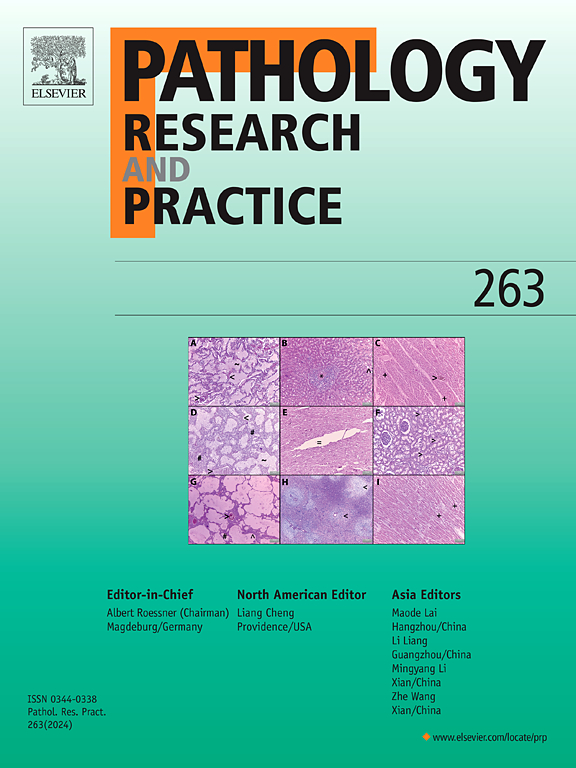Exosomes in melanoma: Future potential for clinical theranostics
IF 2.9
4区 医学
Q2 PATHOLOGY
引用次数: 0
Abstract
Melanoma, an aggressive form of skin cancer, presents significant therapeutic challenges due to its resistance to conventional treatments and propensity for metastasis. Exosomes, nanoscale vesicles secreted by a wide variety of cells, have emerged as promising tools for developing novel melanoma therapies. Exosome-based therapeutic approaches offer several advantages, including inherent biocompatibility, low immunogenicity, and the ability to cross biological barriers. This review explores the therapeutic potential of exosomes in melanoma treatment, focusing on their multifaceted roles in modulating tumor cell behavior, enhancing anti-tumor immune responses, and serving as targeted drug delivery vehicles. We discuss various strategies employed to engineer exosomes for enhanced therapeutic efficacy, including loading them with chemotherapeutic agents, small interfering RNAs (siRNAs), microRNAs (miRNAs), and immunomodulatory molecules. Additionally, we highlight the potential of exosomes derived from diverse sources to enhance anti-cancer effects. Furthermore, we address the challenges and future directions in translating exosome-based therapies from bench to bedside, emphasizing the need for standardized isolation and manufacturing protocols, as well as rigorous preclinical and clinical evaluations to unlock the full therapeutic potential of exosomes in the fight against melanoma.
黑色素瘤中的外泌体:临床治疗的未来潜力
黑色素瘤是一种侵袭性皮肤癌,由于其对常规治疗的抵抗和转移倾向,提出了重大的治疗挑战。外泌体是由多种细胞分泌的纳米级囊泡,已成为开发新型黑色素瘤治疗方法的有前途的工具。基于外泌体的治疗方法有几个优点,包括固有的生物相容性、低免疫原性和跨越生物屏障的能力。这篇综述探讨了外泌体在黑色素瘤治疗中的治疗潜力,重点是它们在调节肿瘤细胞行为、增强抗肿瘤免疫反应和作为靶向药物递送载体方面的多方面作用。我们讨论了用于设计外泌体以增强治疗效果的各种策略,包括装载化疗药物,小干扰rna (sirna), microRNAs (miRNAs)和免疫调节分子。此外,我们强调了来自不同来源的外泌体增强抗癌作用的潜力。此外,我们讨论了将基于外泌体的治疗方法从实验室转化为床边的挑战和未来方向,强调需要标准化的分离和制造方案,以及严格的临床前和临床评估,以释放外泌体在对抗黑色素瘤中的全部治疗潜力。
本文章由计算机程序翻译,如有差异,请以英文原文为准。
求助全文
约1分钟内获得全文
求助全文
来源期刊
CiteScore
5.00
自引率
3.60%
发文量
405
审稿时长
24 days
期刊介绍:
Pathology, Research and Practice provides accessible coverage of the most recent developments across the entire field of pathology: Reviews focus on recent progress in pathology, while Comments look at interesting current problems and at hypotheses for future developments in pathology. Original Papers present novel findings on all aspects of general, anatomic and molecular pathology. Rapid Communications inform readers on preliminary findings that may be relevant for further studies and need to be communicated quickly. Teaching Cases look at new aspects or special diagnostic problems of diseases and at case reports relevant for the pathologist''s practice.

 求助内容:
求助内容: 应助结果提醒方式:
应助结果提醒方式:


